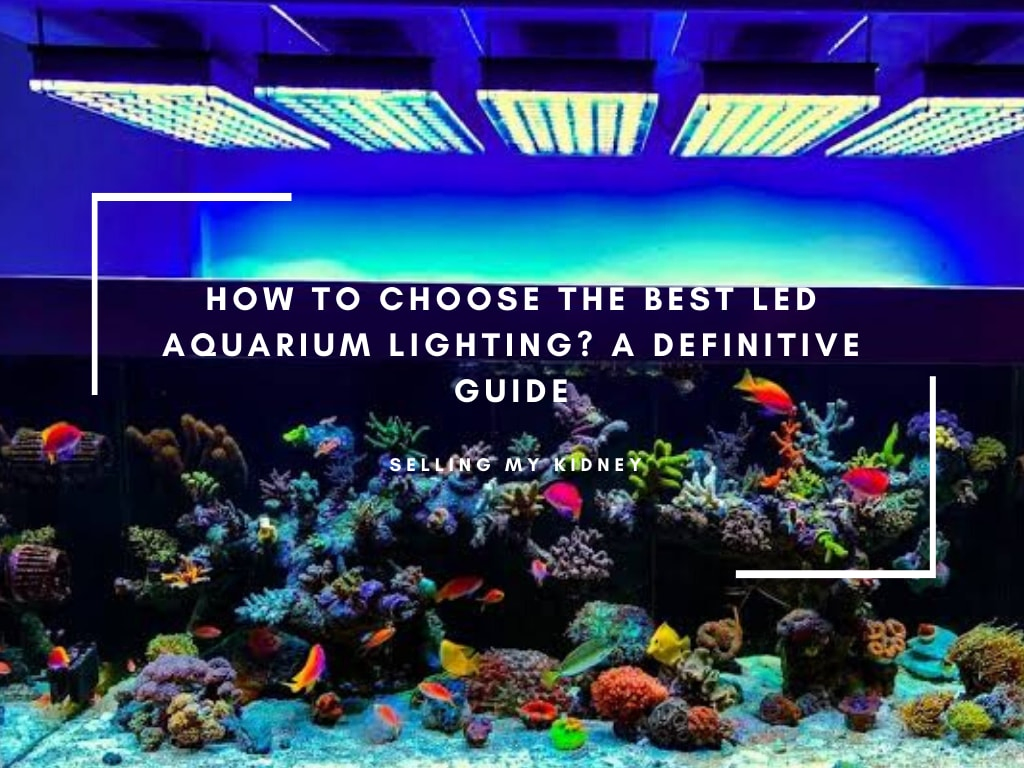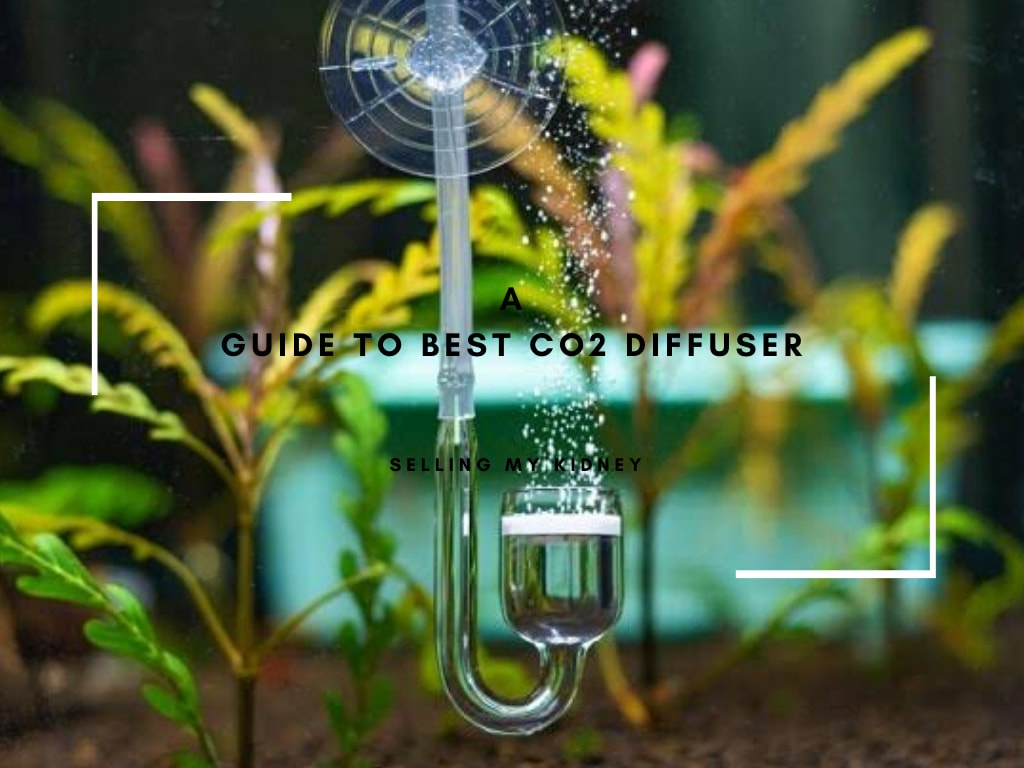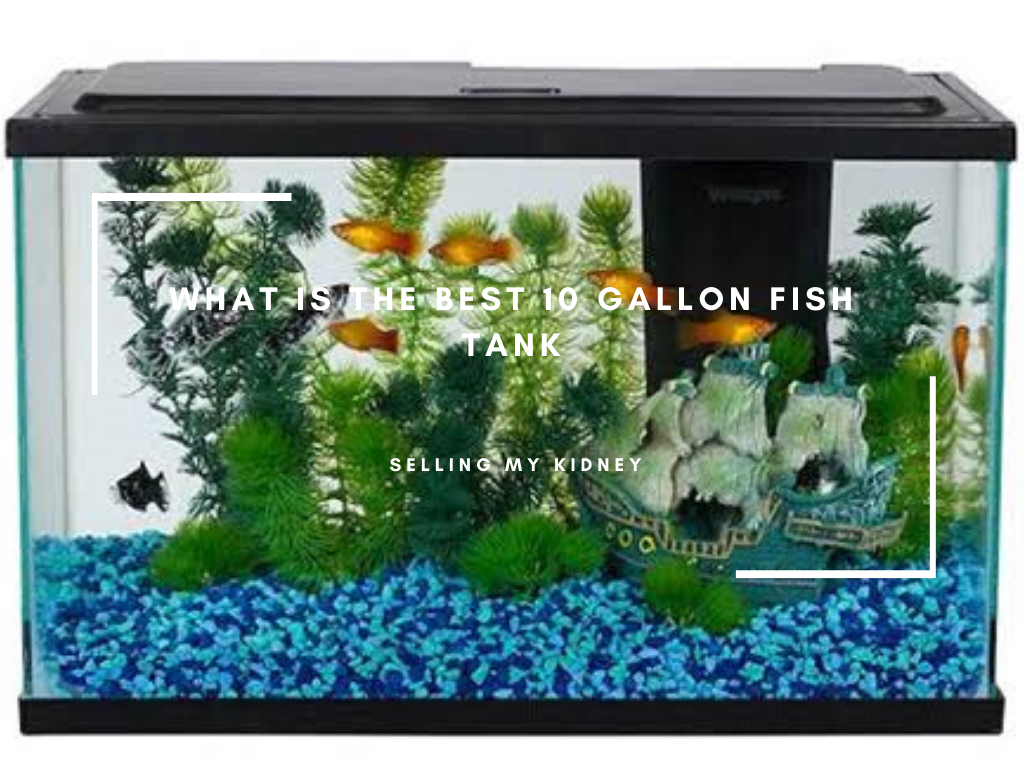Proper water and air circulation are the two prime characteristics of a good aquarium setup. This ensures proper distribution of nutrients and lowers waste and toxic accumulation in the aquarium. How can you maintain proper circulation? Yes, you’ve guessed it – with an aquarium powerhead.
Choosing the best aquarium powerhead is not rocket science, but it’s not an easy task either (if you are new to the game). So, today, we will look into the matter of how to choose the best aquarium powerhead.
To help you with this process, I’ve compiled a list of great powerheads so you can easily choose one.
Let’s get started!
| IMAGE | PRODUCT | DETAILS | rating | price |
|---|---|---|---|---|
Overall Best | Hydor Koralia Nano Aquarium Circulation Pump |
| ||
Runner Up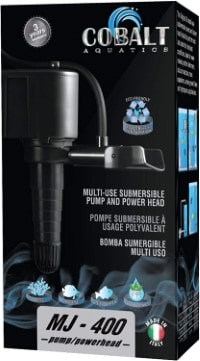 | Cobalt Aquatics MJ Water Pump Multi-Purpose Powerhead |
| ||
Best on Budget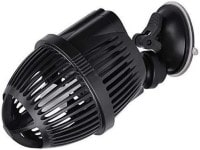 | SUNSUN JVP Series Submersible Circulation Powerhead Pump |
| ||
 | Marineland Penguin Submersible Power Head Pump for Aquariums |
| ||
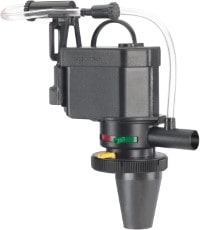 | AquaClear 50 Powerhead |
| ||
 | Odyssea EX Powerhead Water Pump Submersible |
| ||
 | Tunze 6055.000 Nano Stream with 7090.500 Controller |
|
Top 7 Best Aquarium Powerheads of 2020
Hydor Koralia Nano Aquarium Circulation Pump – Overall Best
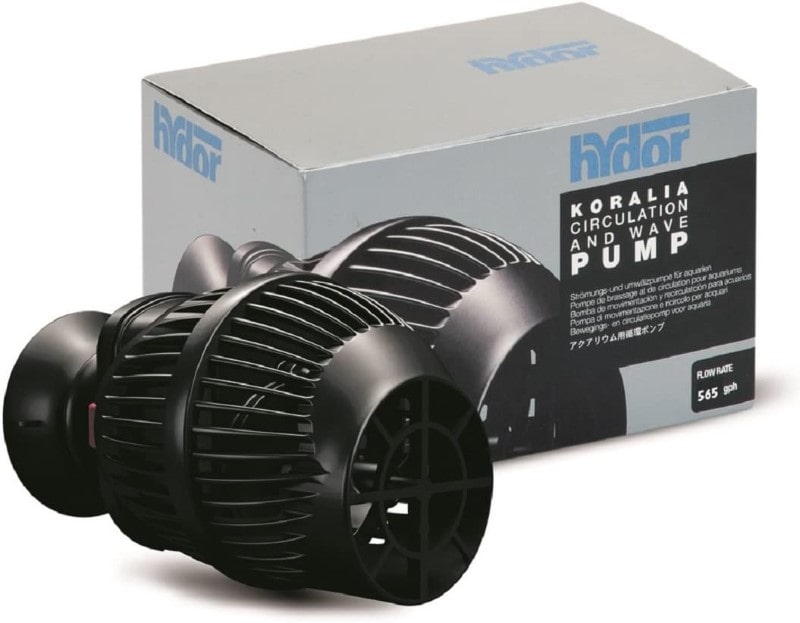
Hydor Koralia has gained a cult status among fishkeepers for being the ultimate aquarium powerhead. Its popularity is mostly due to its unmatchable quality.
You will understand the difference between a cheap product and a Hydor powerhead simply by looking at the build quality.
The flow rate is fairly high and controllable – adjustable flow rate is rare in powerheads.
Also, aquarists heavily praise its magnet-suction cups.
Overall, this is the best aquarium powerhead you can find in this price range and it serves both freshwater and saltwater tanks.
Product Profile – Hydor Koralia Nano Aquarium Circulation Pump (Koralia 565)
- Flow rate: 565 gallons/hour
- Recommended tank size: 20 to 40 gallons (saltwater), 40 to 65 gallons (freshwater)
- Power consumption : 3.5W
- Country of origin: Italy
Notable Features
- Patented magnet-suction cups for easier installation
- Can mimic the flow of a river or sea
- Adjustable flow rate (requires a Hydor Smart Wave controller)
- Comes with cable protector
- 360° angular flow control
- Three different models available
Cobalt Aquatics MJ Water Pump Multi-Purpose Powerhead – Best Powerhead for Freshwater Aquariums
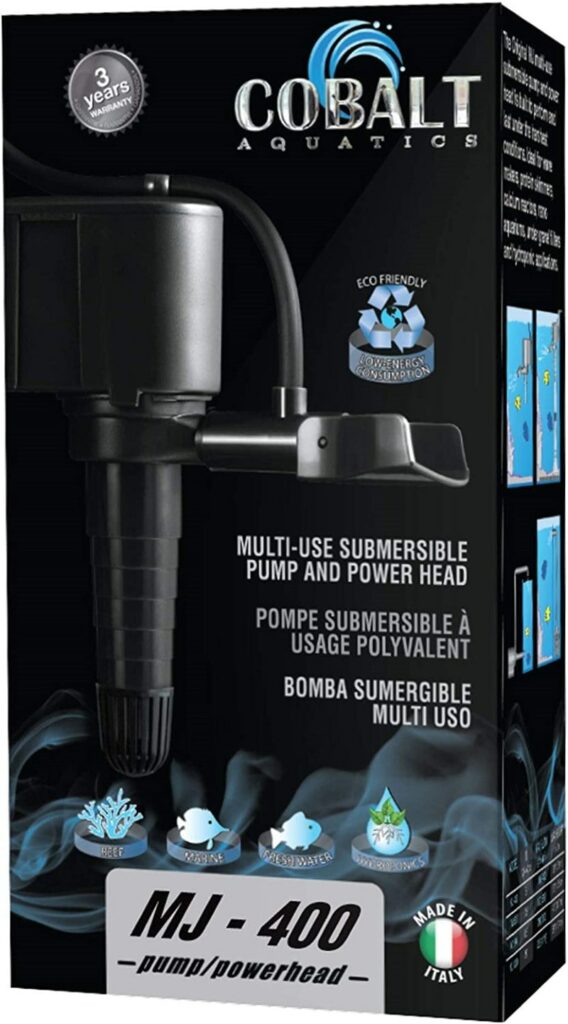
There are two features which make the Cobalt Aquatics MJ Water Pump (MJ400) my favorite option:
- Ultra-strong impeller
- Installation mechanism
The strong impeller makes it one of most durable powerheads on the market. In addition, this powerhead comes with one of the best installation mechanisms.
Also, you will experience almost silent operation with this powerhead.
However, the low flow rate can be a problem. Luckily, there are four different models if you have a large tank.
Product Profile – Cobalt Aquatics MJ Water Pump (MJ400)
- Flow rate: 106 gallons/hour
- Recommended tank size: 20 to 30 gallons
- Power consumption : 5W
- Country of origin: Italy
Notable Features
- Nylon infused fin-system impeller
- Secure mounting brackets with three-position suction cups
- Fully rotational and customizable
- Water intake tube is fully sealed and leak-proof
- Adjustable venturi silencer makes it ones of the most silent options
- Long six-foot power cord
- Four different models available
SUNSUN JVP Series Submersible Circulation Powerhead Pump – The Budget Option
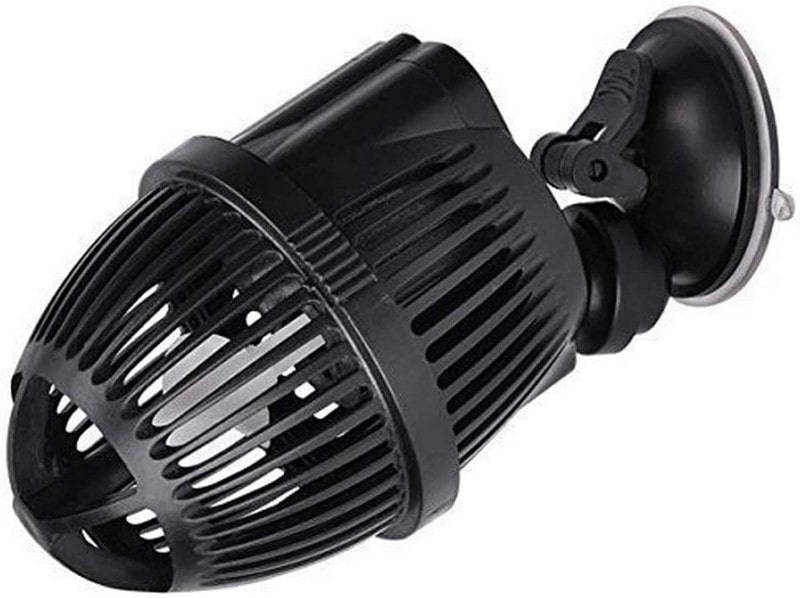
If flow rate is your main concern, you should skip every other option and go for the SUNSUN JVP Series Submersible Circulation Powerhead Pump (800 GPH).
Its whopping 800 GPH flow rate is sure to make people fall for it. With such power, you can control the flow rate in your aquarium with just a single powerhead.
However, there is one small issue – this powerhead is only suitable for saltwater aquariums. This is sad news for freshwater aquarium owners, but it’s one of the best saltwater or reef tank powerheads on the market.
If its power seems a little bit too much, you can choose another model with lower power delivery.
Product Profile – SUNSUN JVP Series Submersible Circulation Powerhead Pump (800 GPH)
- Flow rate: 800 gallons/hour
- Recommended tank size: 75 to 150 gallons (saltwater)
- Power consumption : 6W
- Country of origin: China
Notable Features
- Completely waterproof
- Extremely high 800 GPH flow rate
- Complete 360° flow rotation
- Single-suction cup for easier installation
- Oil-free motor
Marineland Penguin Submersible Power Head Pump for Aquariums – Best for Nano Tanks
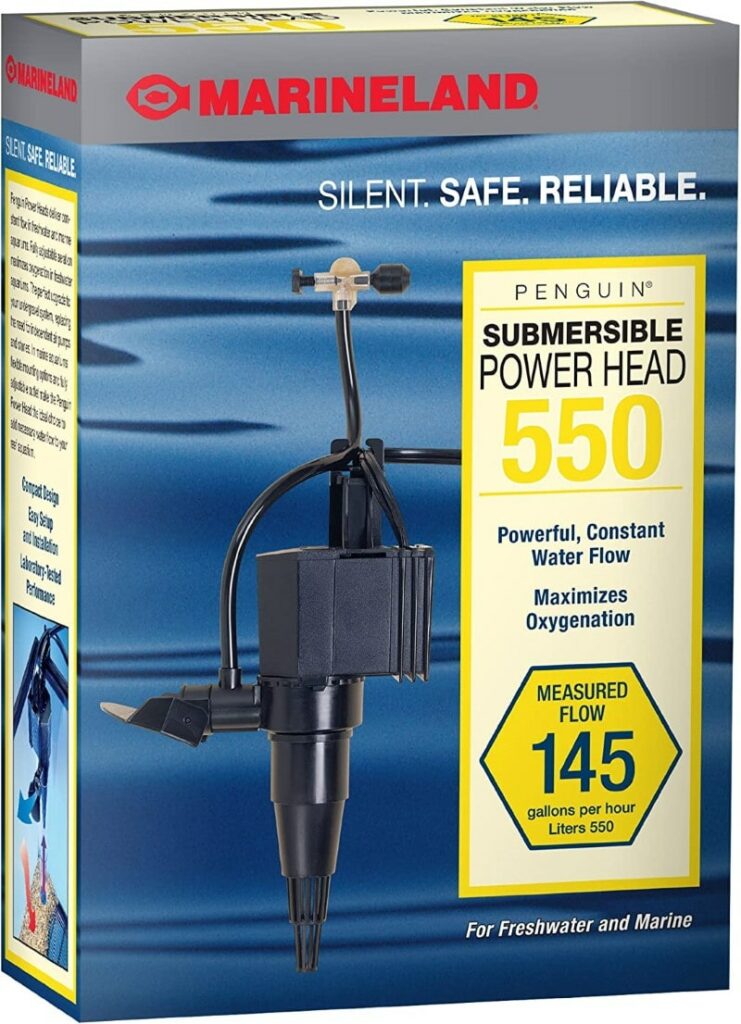
The Marineland Penguin Submersible Powerhead offers more versatile flow control. There is a custom air valve which helps regulate the flow with an adjustable aeration valve.
In addition, it has a flow diffuser to disperse the strong targeted flow. This creates a uniform flow rate all over the tank while making it easier for your fish to swim freely.
If you have plants or fish which prefer low currents, Marineland Penguin Submersible Powerhead is the right option for you.
Product Profile – Marineland Penguin Submersible Power Head (Model 550)
- Flow rate: 145 gallons/hour
- Recommended tank size: 20 to 40 gallons
- Power consumption : Not specified
- Country of origin: USA
Notable Features
- Fully submersible powerhead
- Custom air valve helps to regulate air flow
- Noise reduction air filter
- Adjustable aeration valve
- Comes with a flow diffuser
- Three different models available
AquaClear 50 Powerhead – Best Filtration Support

Many people use a powerhead to support their existing filtration system and this makes perfect sense. If you are one of these people, you should choose the AquaClear 50 Powerhead.
In fact, this powerhead can support other devices than filters, such as protein skimmers, spray bars, and wave makers.
Also, some aquariums demand flow in the bottom part. You can use this to help in this situation as it offers great flow at the undergravel level too.
Product Profile – AquaClear 50 Powerhead
- Flow rate: 270 gallons/hour
- Recommended tank size: 20 to 50 gallons
- Power consumption : Not specified
- Country of origin: USA
Notable Features
- Can increase water flow through gravel substrate
- Supports the filtration process (requires an AquaClear Quick Filter)
- Can be connected to protein skimmers, spray bars, and other accessories
- Fully submersible design
- Creates an additional layer of mechanical filtration
Odyssea EX Powerhead Water Pump Submersible – The Versatile Option
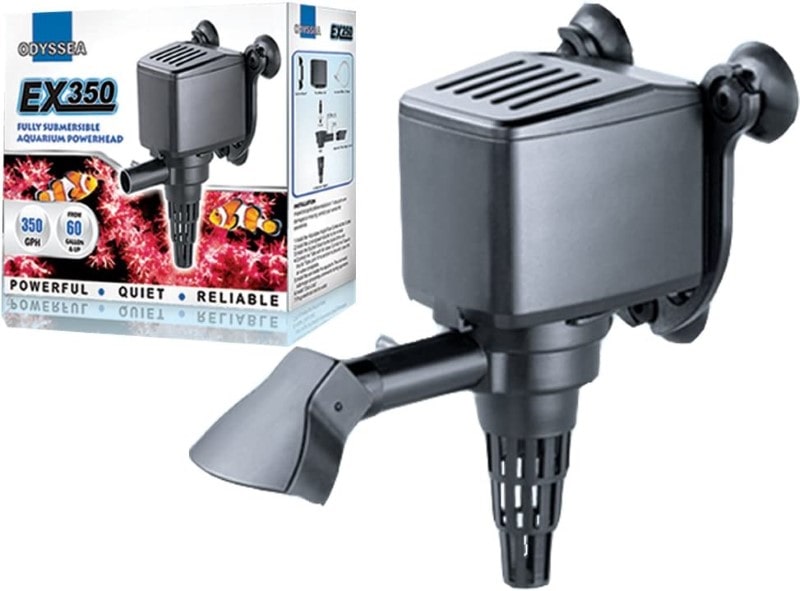
It feels great when a product from a relatively unknown brand performs like magic. The Odyssea EX Powerhead Water Pump Submersible (EX 350) is a prime example of such products.
Few people are familiar with Odyssea, but this is one of the best powerheads on the market right now. It has fairly strong flow rate, consumes very little power, and is almost silent.
It is the perfect example of a decent powerhead.
Product Profile – Odyssea EX Powerhead Water Pump Submersible (EX 350)
- Flow rate: 350 gallons/hour
- Recommended tank size: 60 gallons +
- Power consumption : 3.5W
- Country of origin: USA
Notable Features
- Suitable for medium tanks (60 gallons +)
- Can be paired with a cone to convert it into a filter
- Fully submersible design
- Flow direction can easily be adjusted
- Two models available
Tunze Turbelle Nanostream 6055.000 with 7090.500 Controller – The Premium Option

What if you don’t care about price and just want the perfect product? What is the ultimate powerhead that modern technology can offer?
Undoubtedly, this is the Tunze 6055 Nano Stream with 7090 Controller.
Tunze once again reminds the world what solid German engineering can offer. I could talk at length about the unique and mind-boggling features of this product.
The most fascinating part of this powerhead is its controller. With this microprocessor-controlled powerhead, almost any pattern of waves is possible in your aquarium.
It’s an absolute beast!
However, the price tag may scare a lot of people, but as I said, this is the best aquarium powerhead that money can buy.
Product Profile – Tunze 6055 Nano Stream with 7090 Controller
- Flow rate: 250 to 1,450 gallons/hour
- Recommended tank size: 10.6 to 132 gallons
- Power consumption : 4W to 18W
- Country of origin: Germany
Notable Features
- Fully controllable flow rate
- Comes with a 7090 microprocessor-controlled motor and controller
- 3-D adjustment
- Extra-low voltage consuming electronic PM motor with run-dry protection
- Can mimic high or low tides and lapping waves
- Can provide wave pounding simulation or oscillating current
- Pump stops automatically in the event of a blockage
- Variable power consumption
Buying Guide: How to Choose an Aquarium Powerhead
An aquarium powerhead is an incredibly useful device as it creates water and air circulation. As a result, fish and plants can experience an almost natural environment.
However, you can’t just choose any powerhead from the shop and use it in your aquarium because this could cause several serious accidents in your tank.
For example, a poorly-made powerhead can create currents which are too high or too low. Such conditions will make your fish agitated. Also, you could experience voltage leakage which could even kill your precious fish.
Therefore, it’s important to choose wisely.
When buying, you should consider the following factors:
Aquarium Tank Size
Tank size is the first and most important factor to consider. A mismatch between tank size and the capability of the powerhead can easily lead to an issue of overpowering or underpowering currents.
There is another issue which is connected to aquarium size – the number of fish you have. Naturally, a large tank will house more fish. The more fish you have, the more waste will be created in the tank.
In such cases, a stronger powerhead is necessary to drive waste to towards aquarium filter intakes.
Generally, it’s hard to find powerheads which can sustain tanks larger than 100 gallons. In this case, you should purchase multiple powerheads in order to balance the load.
More: Learn more about best aquarium for Betta Fish here
Water Flow Rate
Typically, we determine the power of a powerhead by flow rate. This means that the more water a powerhead can circulate per hour, the stronger it is.
So, you MUST check the flow rate of the powerhead.
Generally, this is measured in gallons per hour (GPH) or liters per hour (LPH). The GPH rating should be 5x the total water volume of the tank.
For example, if you have a 30-gallon tank, the ideal powerhead should have a flow rate of around 150 GPH (567LPH).
However, the 5x rule only applies for freshwater tanks. For saltwater tanks or reef tanks, you will require even more powerful powerheads.
For example, the Hydor Koralia Nano Aquarium Circulation Pump (Koralia 565), which takes the number one spot today, can satisfy the needs of a 65-gallon freshwater tank. But when it comes to saltwater tanks, it can only satisfy the needs of a 40-gallon tank at best.
Aquarium Types
I have already mentioned this factor in the last section. You must choose a powerhead based on the type of aquarium and its number of inhabitants.
You might think that there are only two type of aquarium, but you’d be wrong.
These are the common classifications of aquarium:
- Freshwater tanks
- Saltwater tanks
- Reef tanks
- Axolotl tanks
- Planted tanks
- Turtle tanks
Obviously, the list doesn’t end here, but these are the most common ones.
Each of these aquariums has different characteristics, and therefore each of them have different needs from their powerheads.
For example, a turtle tank doesn’t require a powerhead, an axolotl tank might need only low-powered powerhead, but a powerhead is a must for a deep freshwater or saltwater tank.
The most important thing is that you need a powerhead for a deep tank.
Why is that?
Because it offers better oxygenation and water circulation.
Sound Levels
A good powerhead is always silent. I would call this trait the identifier.
Not every brand specifies the noise level (dB rating) on the packaging, but if you see a brand which tells you the noise level, you should understand that that brand cares for you.
Sadly, there is NO powerhead on the market which is TRULY SILENT. There will always be a humming or buzzing sound.
But there is a way out!
Choose a powerhead which remains submerged while it works. This way, the sound will be muffled.
Also, you can follow my method – always read reviews from buyers. These can give you a proper idea of the noise level of a particular powerhead brand.
Aquarium Powerhead Brands
A BIG warning – don’t buy a powerhead from any unknown brand.
This is a common mistake which is made by new aquarists or fishkeepers. They are not to blame – there are a lot of cheap brands which offer tons of features and sometimes look flashy!
But they won’t last long. Actually, they might even break down after only a few days or weeks.
The noteworthy brands do their homework and produce excellent products. So, almost all of their devices are “battletested.”
This is the biggest reason to choose a product from a well-known brand.
Here’s a list of some of the most trusted brands:
- AquaClear
- Aqueon
- Hydor
- Marineland
- KEDSUM
- Cobalt Aquatics
- SUNSUN
- Fluval powerhead
- Jebao
- Current USA
- Hygger
These are the top brands in the aquascaping industry and have years of collective experience creating top-notch products.
What is an Aquarium Powerhead Used for?
In a word, the main purpose of a powerhead is circulation. It circulates air and water.
Why is circulation so important?
Well, if aquarium water remains stagnant for a long time, high levels of toxins and CO2 can accumulate. This issue is more prominent in the bottom corners and around rocks and corals. Even filters don’t help much in some cases.
Over time, such water conditions can cause different diseases.
You can expect the following when you install an aquarium powerhead:
- Cleaner and healthier water
- Less debris and physical waste
- Almost natural water flow in the aquarium
- Healthier plants and fish
- Less algae growth
- Proper distribution of nutrients
What is the Best Powerhead for a Reef Tank?
A reef tank requires a powerhead more than any other type of tank. The presence of corals and rocks creates several blind spots where water flow is almost non-existent.
But the question is what is the best aquarium powerhead for reef tanks?
In my opinion, the Hydor powerhead is best option for a reef tank. The development team at Hydor recommend using different settings to meet the requirements of a reef tank. This shows their expertise and commitment. Also, the specs list is praiseworthy.
If you are on a tight budget and intend to buy something cheaper, you should go for the SUNSUN JVP Series. This powerhead is specially designed for saltwater and reef tanks.
I should clarify that both of these products are somewhat entry-level powerheads. There are a lot of more powerful and expensive professional-grade powerheads available on the market, such as the Tunze 6055.000 Nano Stream with 7090.500 controller.
More: Learn About Air Stone for Your Tank
Best Powerhead Placement for Saltwater Reef Tanks
Typically, you should place the powerhead on the side wall of your aquarium. This way, you can create uniform water flow all over the aquarium.
For a small aquarium (20 to 40 gallons), one single powerhead is enough, but for a larger tank (60 gallons plus) or a deep tank, you should use two instead of one.
If the tank is too deep, you install a powerhead in the bottom corner to create agitation in the water in lower areas.
However, powerhead placement is very much dependent on the type of coral you keep in your tank. Some corals enjoy a stronger current while others cannot stand it.
So, you should act accordingly.
Where Should You Put a Powerhead in a Planted Aquarium?
As with a reef tank, the placement of a powerhead in a planted tank is quite tricky and depends on the species of plants.
Some plants thrive well in strong currents and some don’t.
However, you shouldn’t place the powerhead towards the bottom as the strong current can damage or weaken the roots. It’s better to place it on the back or side walls so that plants can obtain enough nutrients without any damage being caused to the roots.
How Does an Aquarium Powerhead Work?
An aquarium powerhead is a simple device. Its main mechanism is to suck in water at one end and push it out the other end.
The basic construction consists of a propeller chamber, a propeller, a motor, and an installation mechanism.
When you turn on a powerhead, the motor starts and moves the propeller. Due to centrifugal force, the water enters the propeller chamber and exits the chamber. Centrifugal force also creates a vortex. And finally, this force creates a wave which stirs the whole aquarium.
A suction cup or a magnet will hold the device in one place.
How Do You Install an Aquarium Powerhead?
The installation process is entirely dependent upon the installation mechanism. Some devices use suction cups (most common), some use magnets, and some use clamps.
Firstly, you should read the user manual and check the installation mechanism. Then, you should either attach the cups or use the magnets on the side of the wall.
When doing so, make sure that any wires are not in the way. Also, you must keep the device underwater or it won’t work.
Finally, plug it in to the power outlet. It’s always wise to plug it directly into the wall to avoid nasty accidents.
So, there are only really two steps for installation:
- Attach the suction cups or magnets while keeping the device underwater
- Plug the powerhead into the power outlet on the wall
Conclusion
Who is the winner today? Who claims the title of best aquarium powerhead?
Well, I think you already know the result! The winner is the Hydor Koralia Nano Aquarium Circulation Pump.
Cobalt Aquatics MJ Water Pump Multi-Purpose Powerhead follows Hydor, but misses out on first place by the tiniest margin.
SUNSUN JVP Series Submersible Circulation Powerhead Pump steals third place for being the budget champ.
Let me know your opinions in the comments section.


